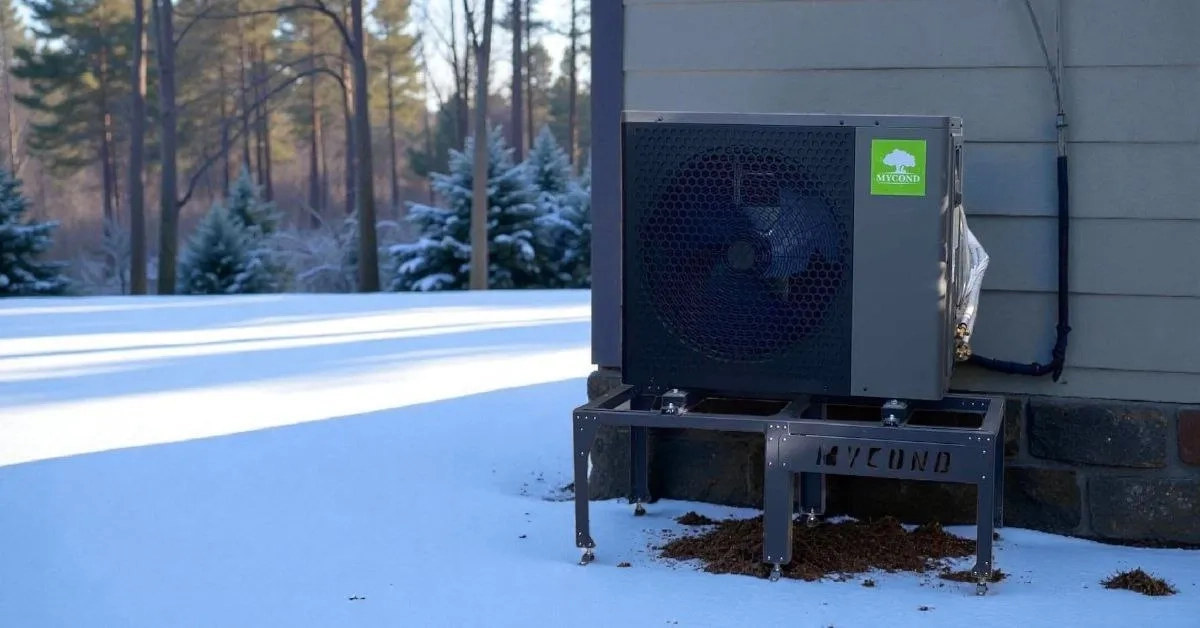
Properly selecting a heat pump for a 150 m² house is not just a matter of comfort; it is a strategic decision that affects the economy and efficiency of your heating system for years. Many homeowners fall into the common myth: “the house area determines the heat pump capacity.” This is fundamentally wrong and leads to unjustified costs and low system efficiency.
The reality is this: two houses with the same area of 150 m² can require radically different heating capacities—from 5 to 15 kW. So what actually determines the required heat pump capacity, and how do you avoid mistakes when choosing a heating system for your home?
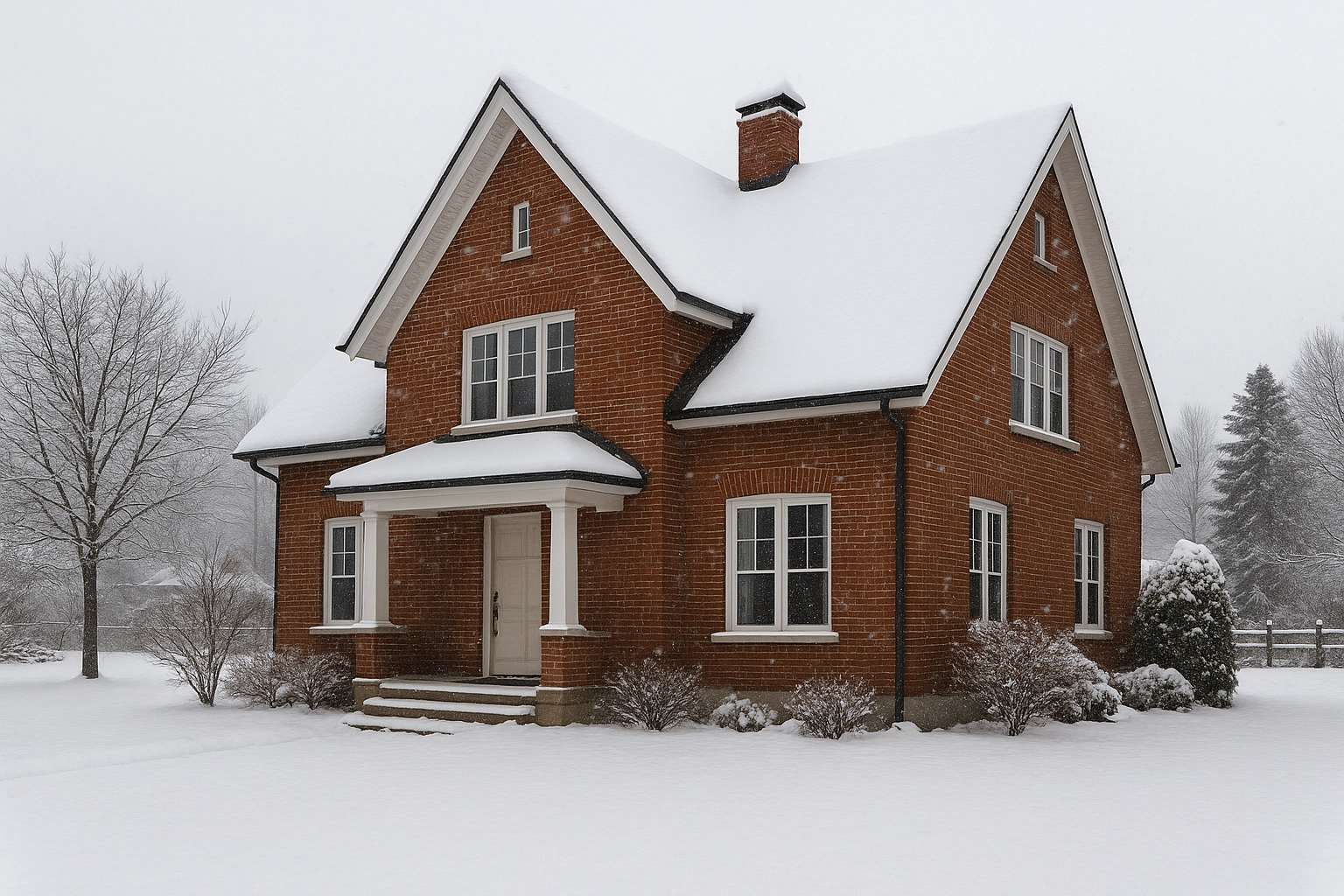
Factors that truly affect heat pump sizing
To correctly size a heat pump for a 150 m² house, you need to consider three key factors that truly determine heat demand:
1. Quality of building insulation
It is the insulation quality, not the area, that is the main factor determining a home's heat losses:
- New energy-efficient homes (PassivHaus, EnEV standards) – 30-50 W/m²
- Renovated and modernized homes with contemporary insulation – 50-70 W/m²
- Older homes without proper insulation – 100-150 W/m²
The difference between a well-insulated and a non-insulated home of the same size can mean a 3–4x difference in heat pump capacity!
2. Heating system
The choice of heat distribution system significantly affects the heat pump’s efficiency:
- Underfloor heating – operates at a low flow temperature (35°C), providing maximum heat pump efficiency
- Fan coils (Gebläsekonvektor) – require a medium temperature (40-45°C)
- Radiators – demand a high supply temperature (55°C), which reduces the heat pump’s COP
3. Climate zone and design temperature
The lowest outdoor temperature in your region determines the peak load on the heating system. For most European regions, the design temperature ranges from -15°C to -25°C.
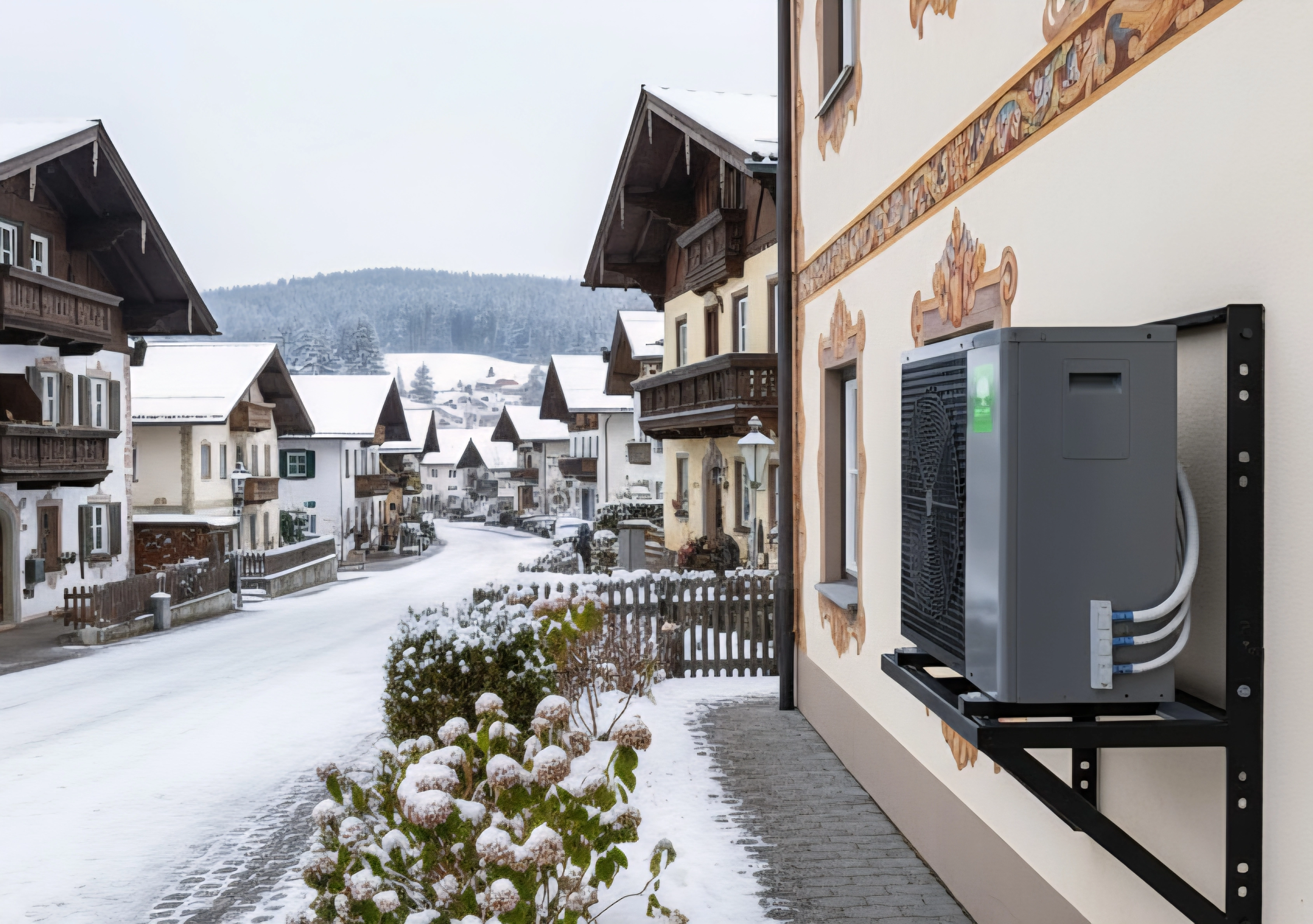
Checklist to determine your home’s insulation category
Before calculating the heat pump capacity, determine which insulation category your home belongs to:
- Energy-efficient home:
- Walls: insulation ≥15-20 cm of mineral wool or equivalent
- Roof: insulation ≥25-30 cm
- Windows: energy-efficient glazing (U-value ≤ 1.0 W/m²K)
- Presence of ventilation heat recovery
- No thermal bridges
- Renovated home:
- Walls: insulation 10-15 cm
- Roof: insulation 15-25 cm
- Windows: modern double-glazed units
- Thermal bridges partially eliminated
- Older home:
- Walls: insulation absent or minimal (up to 5 cm)
- Roof: minimal insulation
- Windows: single-glazed windows or outdated designs
- Significant thermal bridges
Heat pump capacity calculation formula
For an accurate calculation of a home’s heat losses, use the formula:
Q = S × q × k
where:
- Q - required heating capacity (kW)
- S - heated floor area (m²)
- q - specific heat loss (W/m²)
- k - safety factor (typically 1.1-1.2)
Example calculation for a 150 m² house
| Home type | Specific losses (W/m²) | Calculation | Required capacity |
|---|---|---|---|
| Energy-efficient | 40 | 150 × 40 × 1.1 | 6.6 kW |
| Renovated | 60 | 150 × 60 × 1.1 | 9.9 kW |
| Old, uninsulated | 120 | 150 × 120 × 1.1 | 19.8 kW |
As you can see, the required capacity for the same house can be three times higher depending on insulation quality!
Bivalence point and heat pump operating modes
The bivalence point is the outdoor temperature at which the heat pump’s heating output equals the building’s heat load. For most temperate climates in Ukraine and Europe, this point is usually between -5°C and -7°C.
Main operating modes of heat pumps:
- Monovalent mode: the heat pump is the only heat source and covers 100% of the heating demand even on the coldest days. Requires a higher-capacity heat pump.
- Bivalent mode: the heat pump operates down to the bivalence point, after which a backup heater (usually an electric boiler or gas boiler) is engaged to cover peak loads. Allows choosing a smaller heat pump.
BeeHeat model selection for a 150 m² house
Based on the calculated heat demand, we recommend the following optimal BeeHeat models:
| Home demand | Monovalent scheme | Bivalent scheme |
|---|---|---|
| 5-7 kW | MHS-N10BH | MHS-N6BH + backup boiler |
| 8-10 kW | MHS-N12BH | MHS-N10BH + backup boiler |
| 12+ kW | MHS-N14BH | MHS-N12BH + backup boiler |
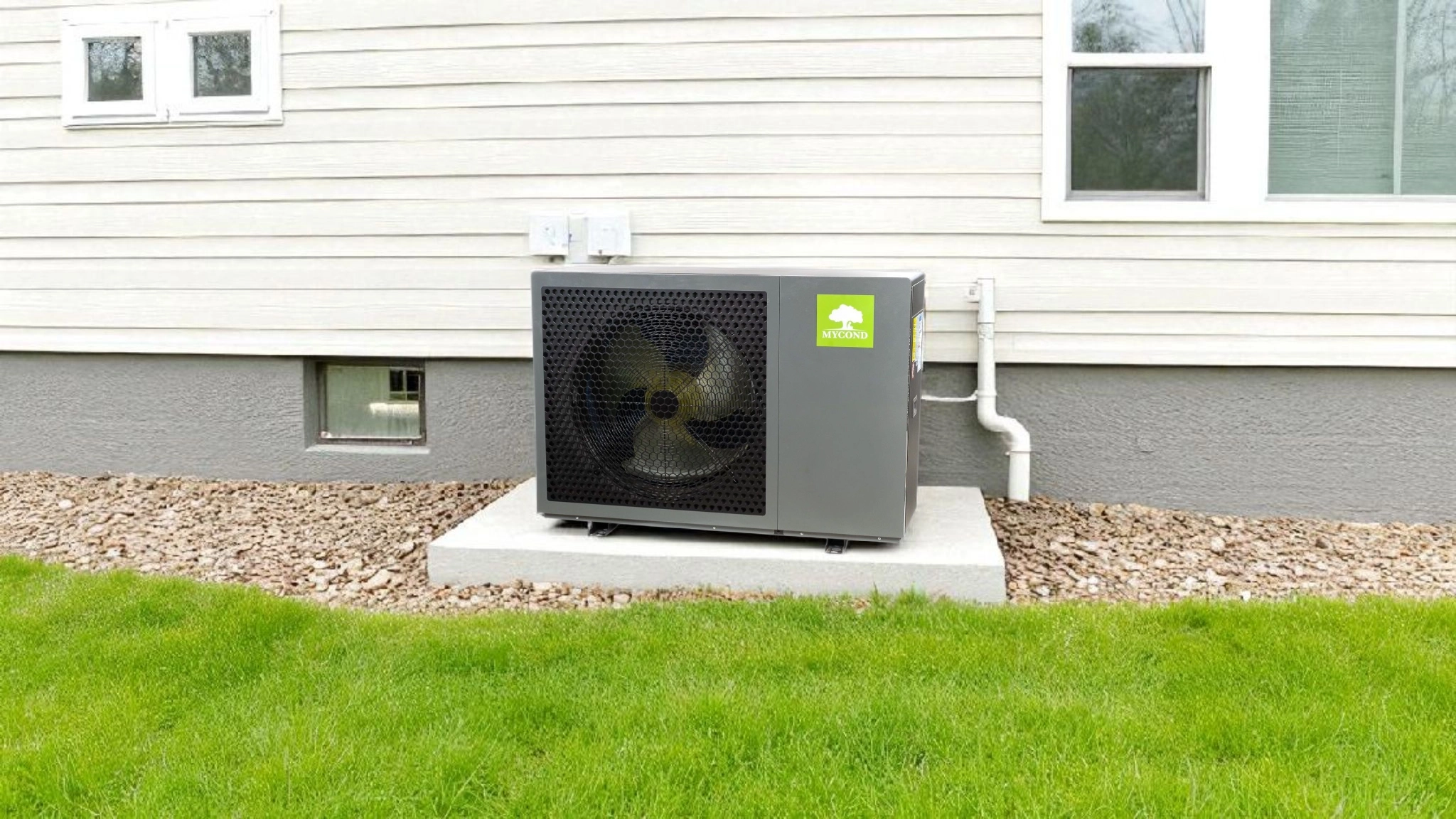
BeeHeat model efficiency under different conditions (COP)
| Model | COP at +7°C | COP at 0°C | COP at -7°C | ||||||
|---|---|---|---|---|---|---|---|---|---|
| W35 | W45 | W55 | W35 | W45 | W55 | W35 | W45 | W55 | |
| MHS-N6BH | 4.75 | 3.85 | 3.15 | 3.95 | 3.25 | 2.65 | 3.05 | 2.55 | 2.15 |
| MHS-N10BH | 4.88 | 3.95 | 3.25 | 4.05 | 3.35 | 2.75 | 3.12 | 2.62 | 2.20 |
| MHS-N12BH | 4.90 | 4.00 | 3.30 | 4.10 | 3.40 | 2.80 | 3.15 | 2.65 | 2.25 |
| MHS-N14BH | 4.95 | 4.05 | 3.35 | 4.15 | 3.45 | 2.85 | 3.20 | 2.70 | 2.30 |
W35, W45, W55 - flow temperature to the heating system (35°C, 45°C, 55°C respectively)
Savings and efficiency of BeeHeat heat pumps
BeeHeat heat pumps deliver significant savings compared to traditional gas boilers. Over a heating season, a heat pump consumes 3000-4500 kWh of electricity depending on:
- The home’s insulation level
- Correct capacity sizing
- The type of heat distribution system
- The region’s climatic conditions
Thanks to the use of high-efficiency Mitsubishi Electric compressors and R32 refrigerant, BeeHeat heat pumps achieve energy efficiency class A+++ at a 35°C flow temperature and A++ at 55°C, ensuring a rapid return on investment.
Technical integration and hydraulic layout
Proper integration of the heat pump into the heating system is the key to its efficiency:
Buffer tank and recommended volumes
- MHS-N6BH, MHS-N8BH: 80 liters
- MHS-N10BH: 100 liters
- MHS-N12BH: 120-150 liters
- MHS-N14BH, MHS-N16BH: 150-200 liters
The exact buffer volume depends on the connection scheme and the type of heating system. The buffer tank serves several functions:
- Reduces the number of heat pump on/off cycles
- Provides hydraulic separation of circuits
- Stores heat for defrost mode
Hydraulic layout and connections
BeeHeat is compatible with various heat distribution systems:
- Underfloor heating: the optimal option for maximum efficiency at a 35°C flow temperature
- Radiators: for efficient operation, low-temperature radiators with a large heat exchange area are recommended
- Fan coils: a good compromise between efficiency and heating speed
For maximum efficiency, all BeeHeat heat pumps are equipped with weather-compensated control that automatically adjusts the flow temperature depending on outdoor conditions.
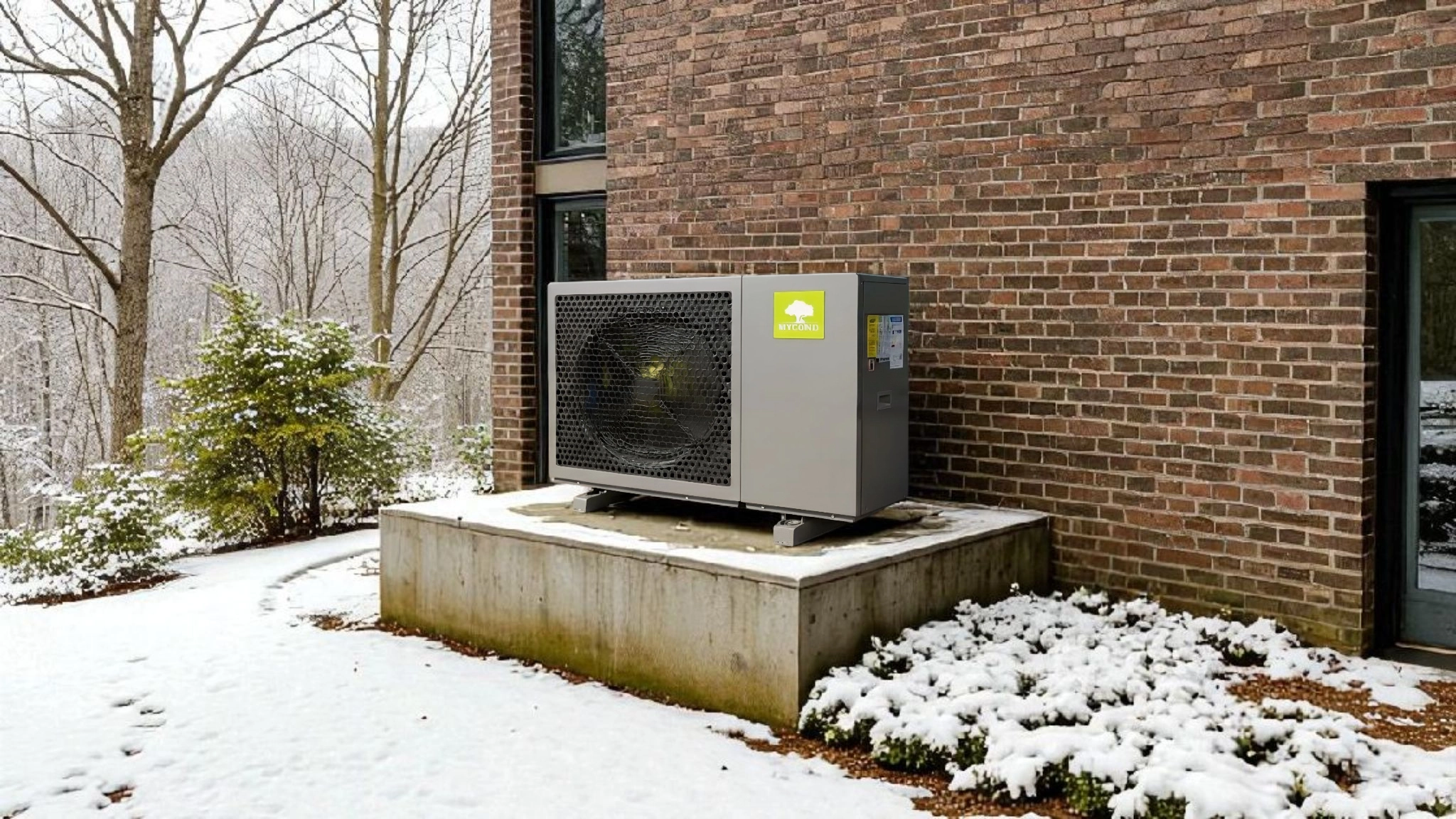
Frequently asked questions (FAQ)
How does BeeHeat operate at -25°C?
BeeHeat heat pumps are designed to operate within a temperature range from -25°C to +43°C. At extremely low temperatures, efficiency (COP) decreases, but the system continues to run. In bivalent schemes, a backup heat source is engaged at low temperatures to maintain comfort.
Do you need a backup boiler for a heat pump?
It depends on the chosen operating scheme. In a monovalent scheme, the heat pump is sized with a capacity margin and is the only heat source. In a bivalent scheme, a backup boiler is used during peak loads, allowing a smaller heat pump to be installed.
Which heating system type is most efficient with a heat pump?
Underfloor heating with a 35°C flow temperature provides maximum heat pump efficiency. Fan coils (40-45°C) are a good compromise. Radiators (55°C) reduce COP but can be used with proper sizing.
What buffer tank size is needed for a heat pump?
The volume depends on the pump model: for MHS-N6BH/N8BH – 80 liters, MHS-N10BH – 100 liters, MHS-N12BH – 120-150 liters, MHS-N14BH/N16BH – 150-200 liters. The specific volume is determined by the connection scheme.
How often do BeeHeat heat pumps need maintenance?
The recommended interval is once a year before the start of the heating season. Maintenance includes checking the pressure of R32 refrigerant, cleaning filters, and inspecting electrical connections and system settings.
Can a BeeHeat heat pump be connected to an existing heating system?
Yes, BeeHeat heat pumps can be integrated into existing heating systems. For maximum efficiency, the system may need to be upgraded to operate at lower flow temperatures.
Is cascade connection of multiple heat pumps possible?
Yes, BeeHeat supports cascade connection of up to 9 units, allowing high-capacity systems with optimal load control.
Conclusion: choose wisely, save efficiently
Selecting a heat pump for a 150 m² house is a complex task that requires considering many factors. The key takeaway: capacity is determined not by area, but by insulation quality and the specifics of the particular home.
BeeHeat heat pumps with Mitsubishi Electric compressors, Alfa Laval heat exchangers, and R32 refrigerant provide a comprehensive energy-efficient solution for climate control without overpaying for a global brand. If you are looking for reliable and modern equipment that will ensure comfort and savings for many years, BeeHeat is the optimal choice.
For a detailed consultation and selection of the optimal heating system for your home, contact us by phone or fill in the feedback form at the bottom of the page.